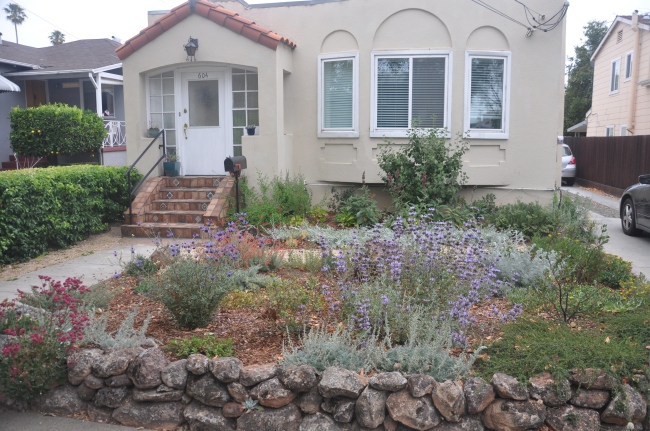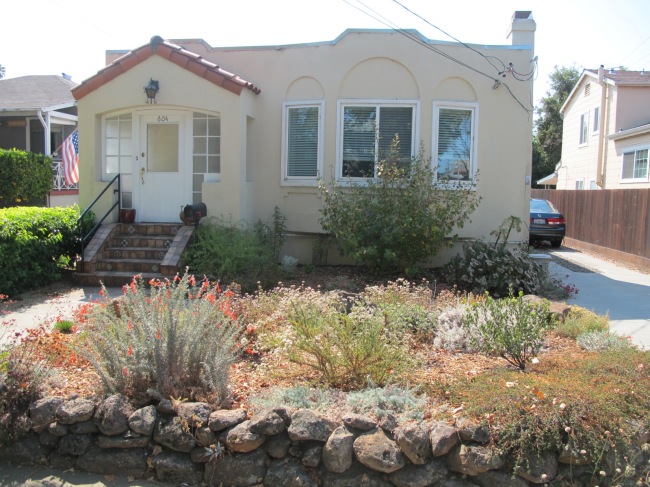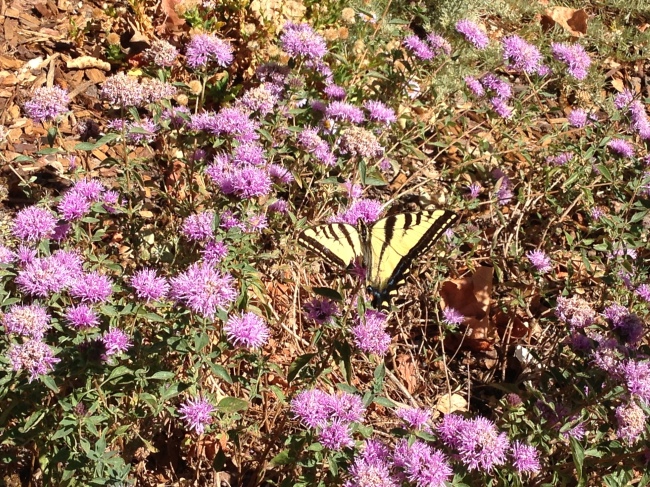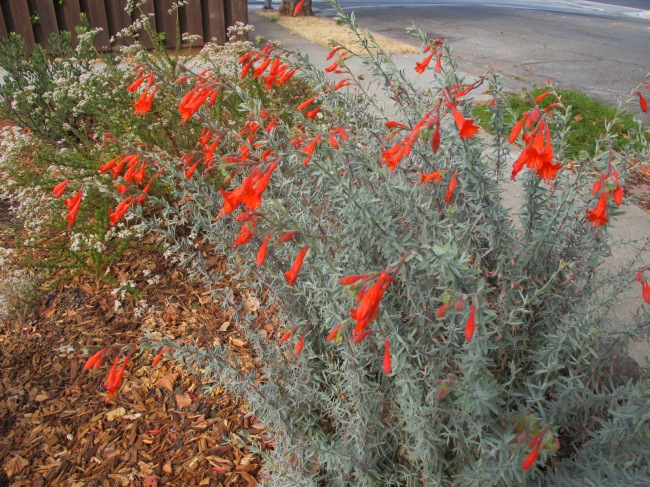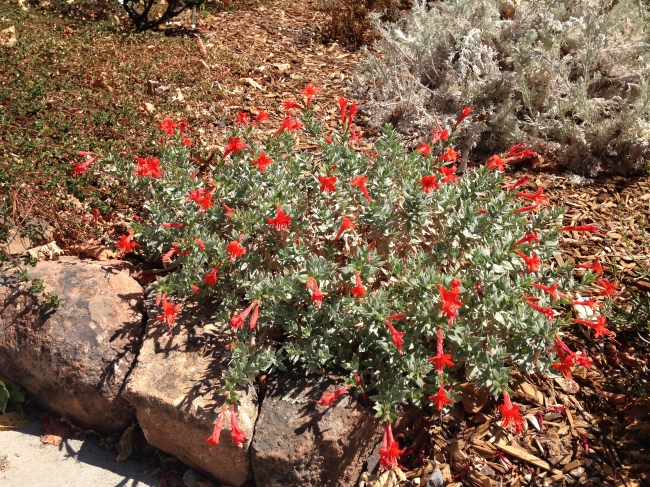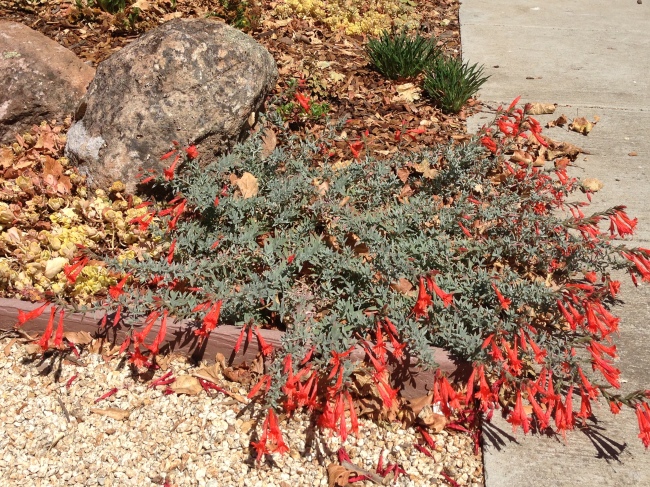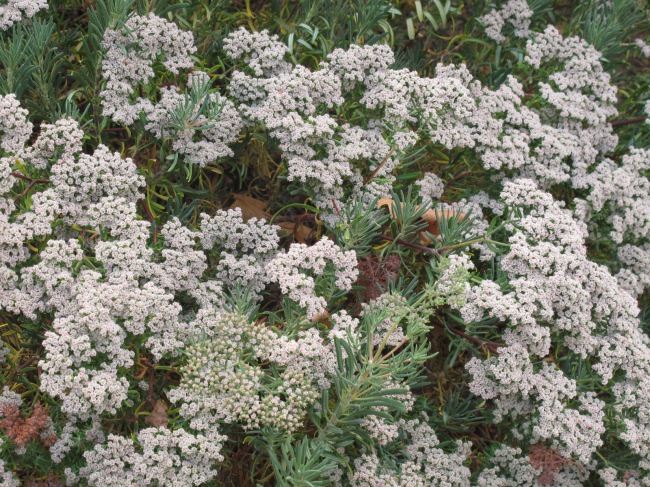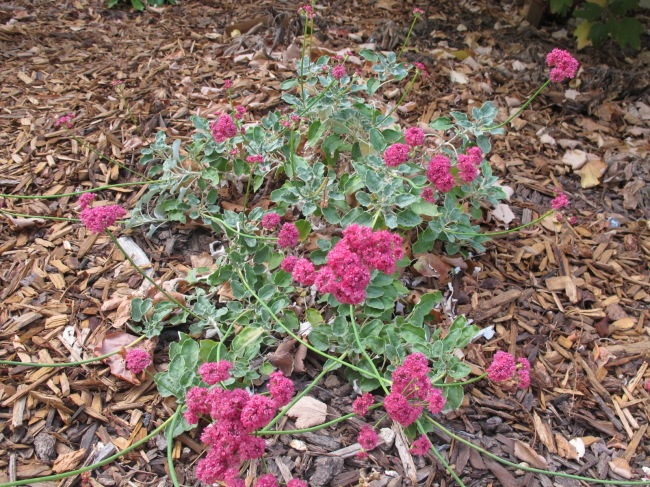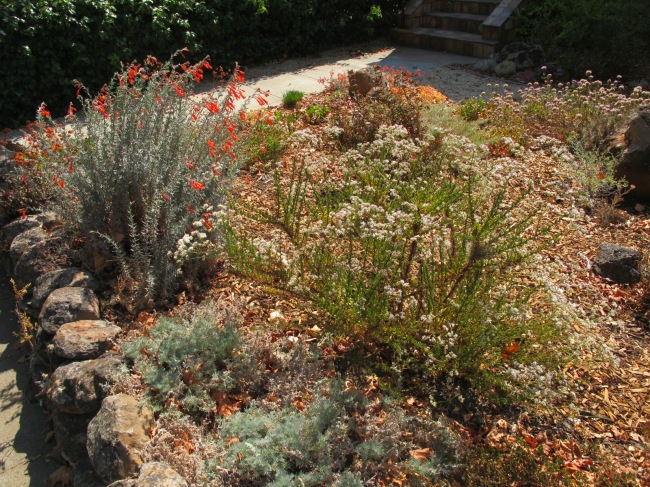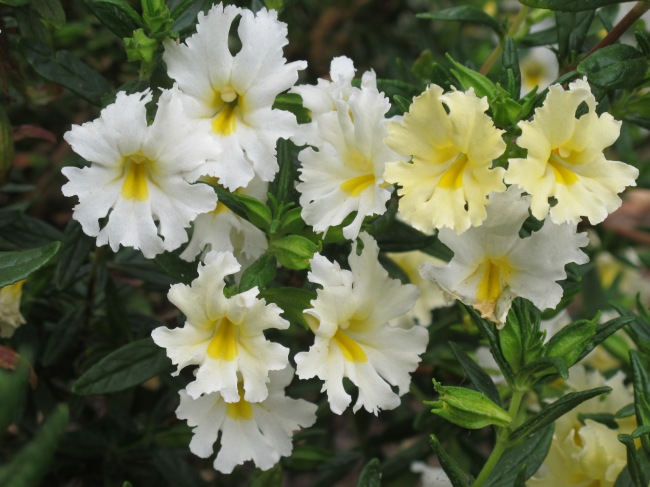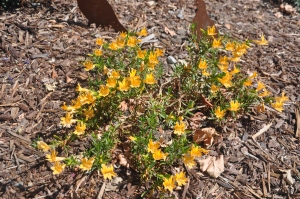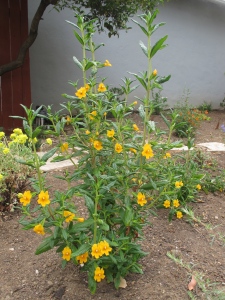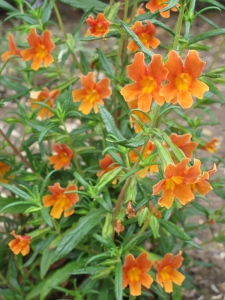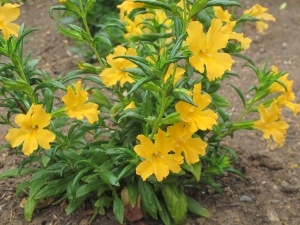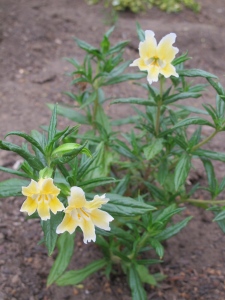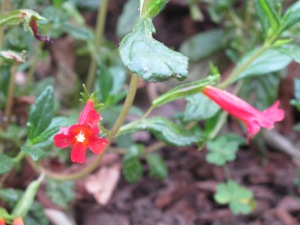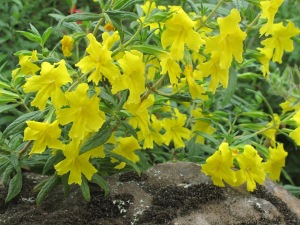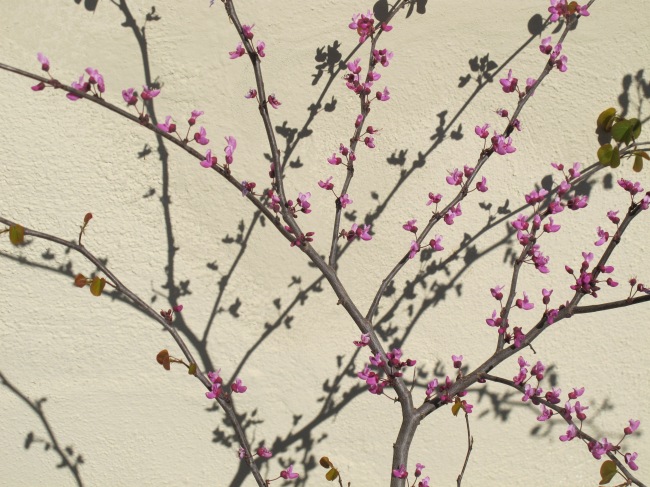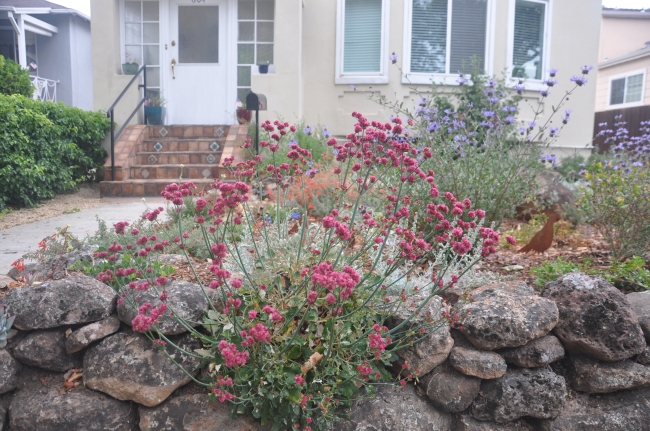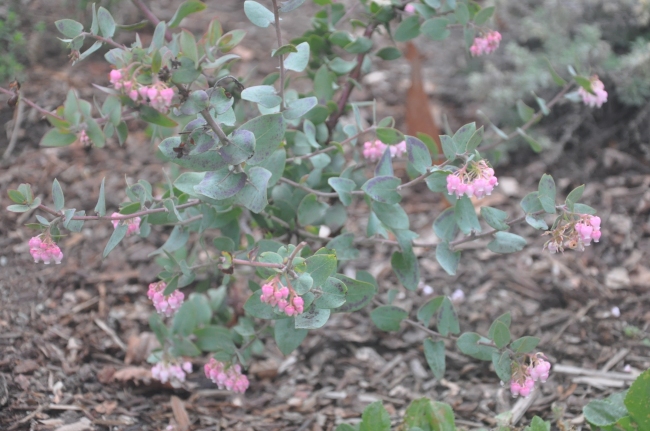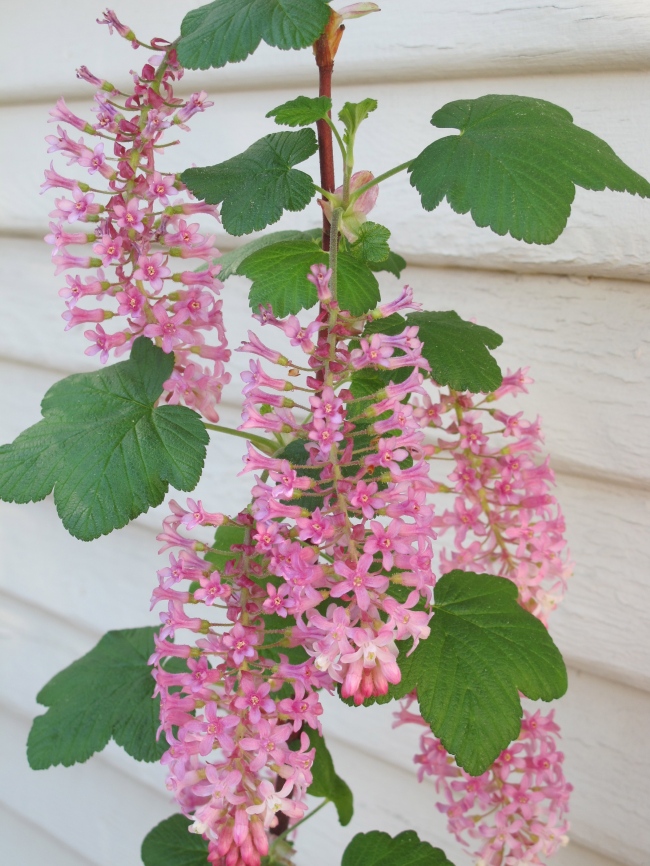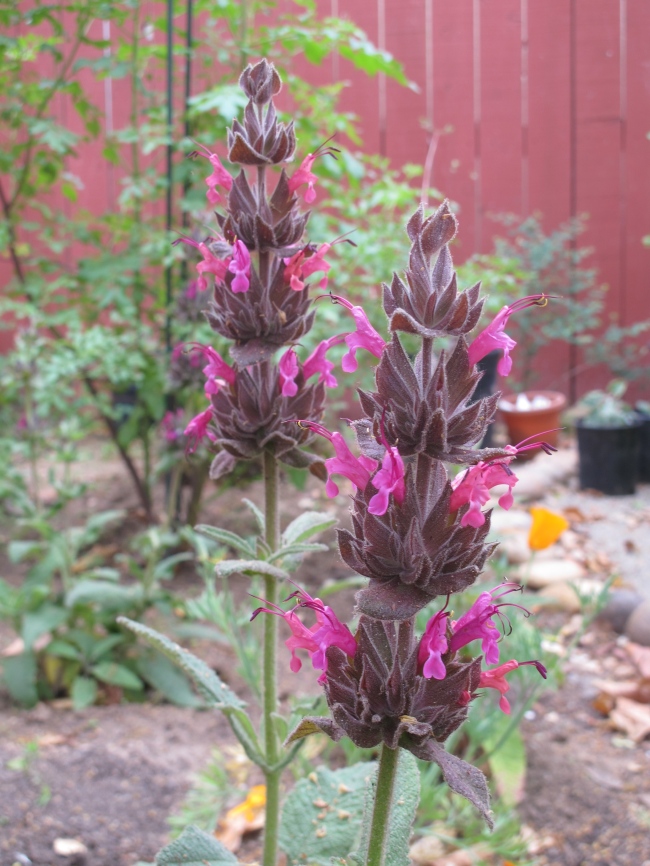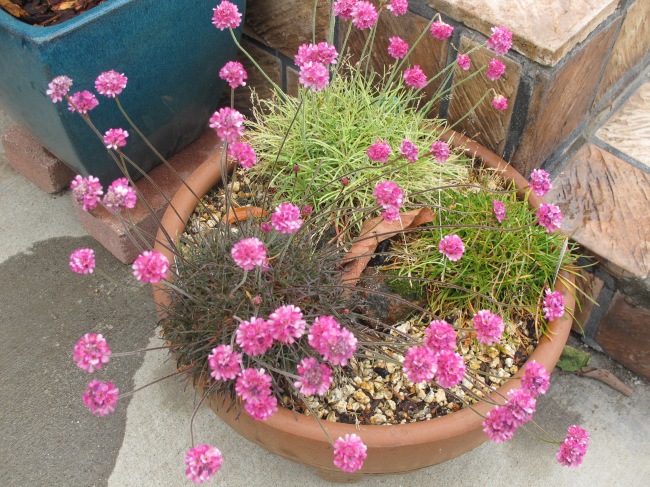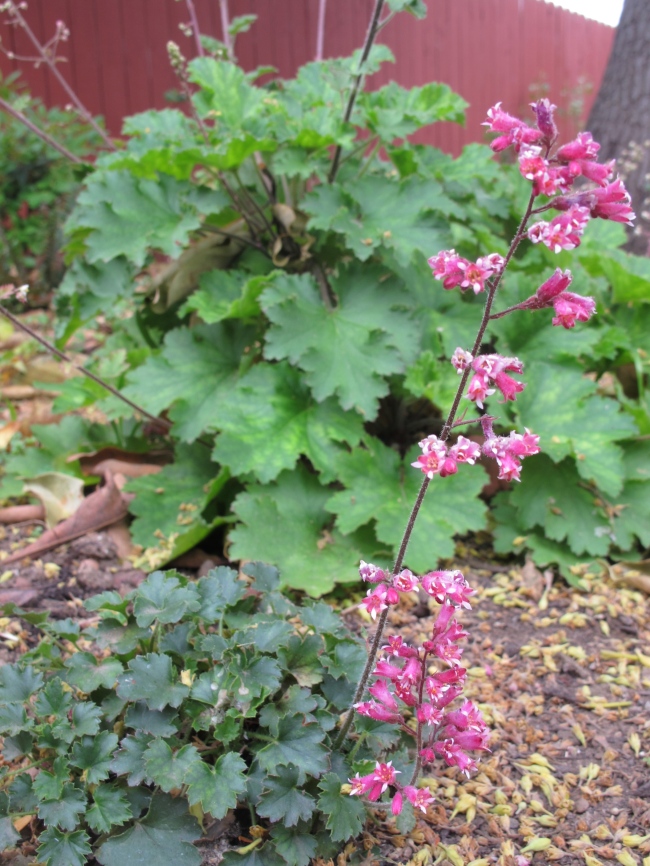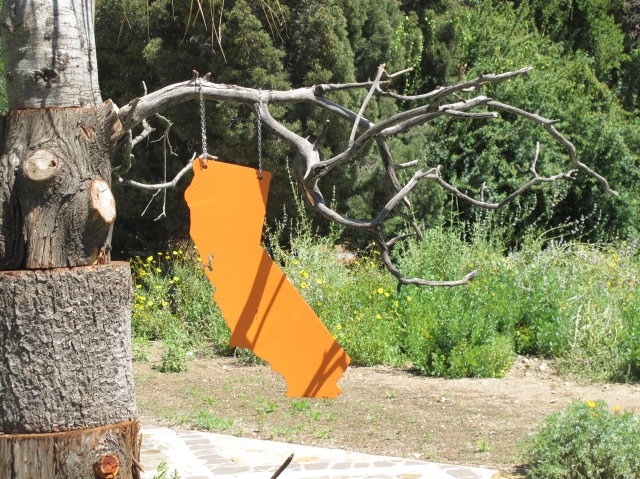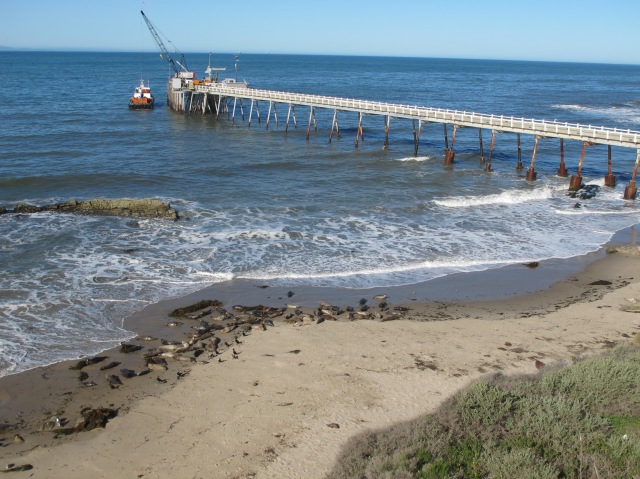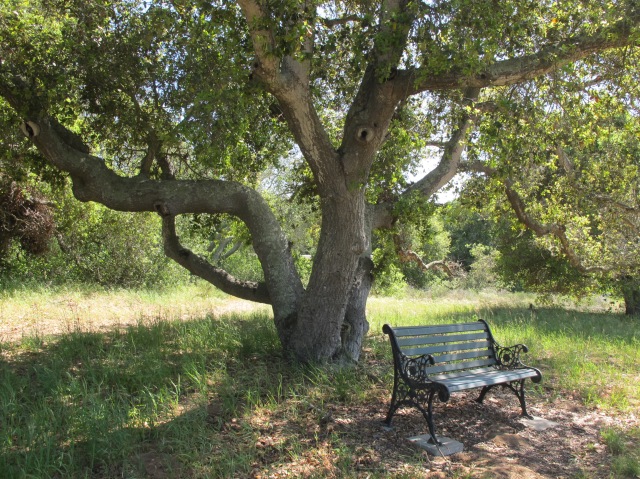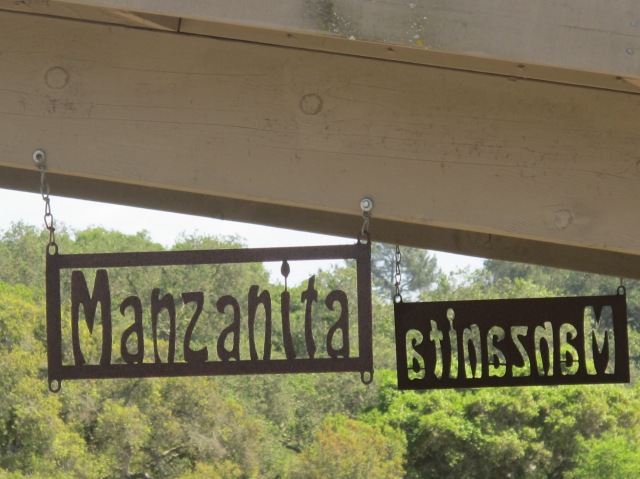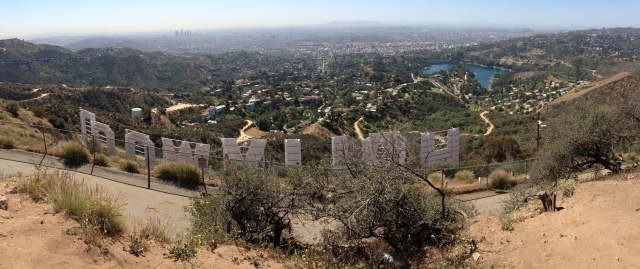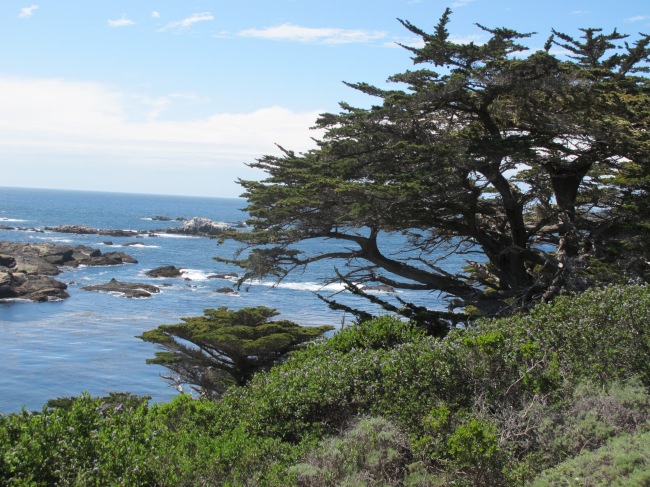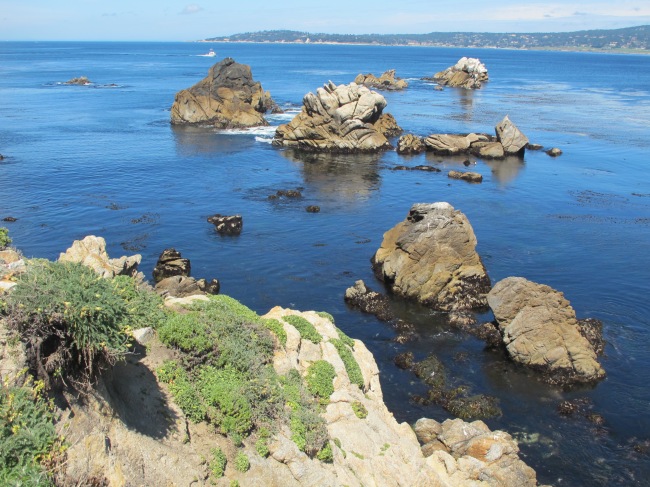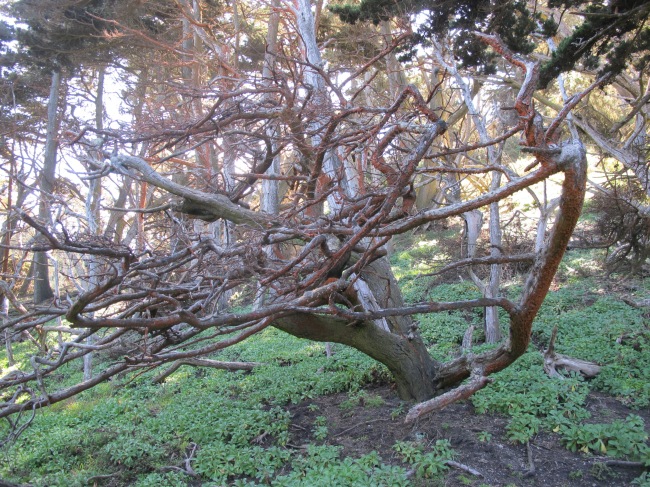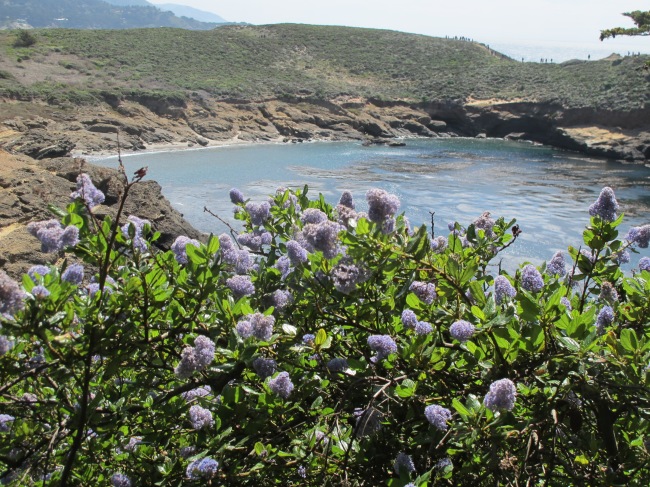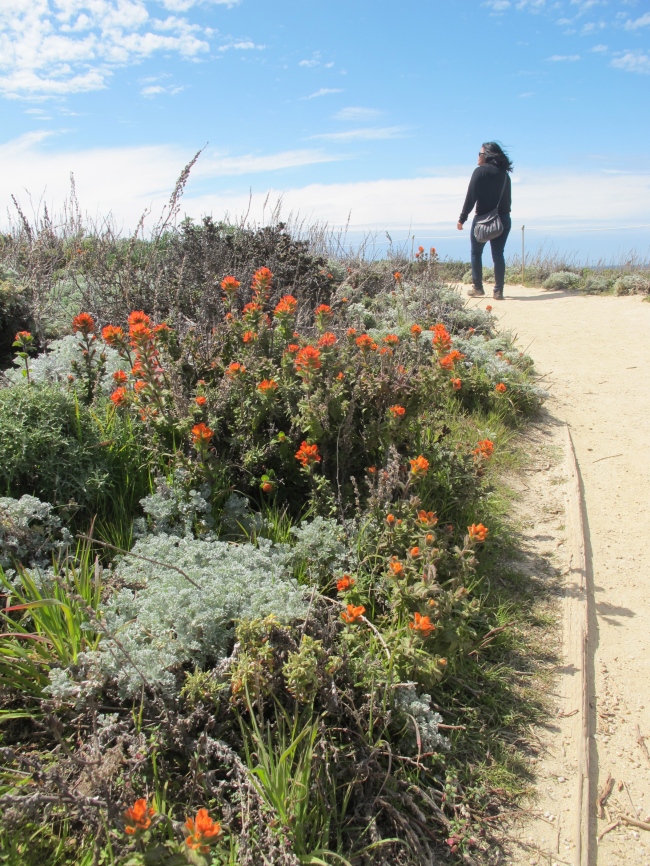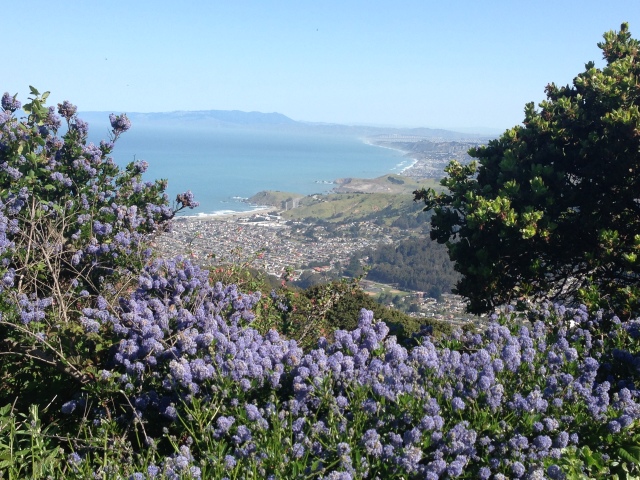 |
| Vista of Pacifica framed by blooming ceanothus and manzanita |
When the weather cooperates, it's always pleasant to head west and explore the San Mateo County coastline. Summers can be very foggy, but occasionally you get clear days that afford majestic views of the ocean and beautiful rugged coastline. Recently I hiked a couple of the trails in McNee Ranch State Park in Montara, a small coastal town situated between Half Moon Bay and Pacifica. The park includes Montara Mountain, one of the taller peaks on the Peninsula. I love the mix of coastal scrub and sea cliff dwelling plants that thrive in cool foggy summers. One of the goals of these hikes was to get ideas for the front yard, which currently includes a mixture of local and non-local native plants. This Fall I hope to create a landscape featuring only plants that can be found on San Bruno and Montara mountains. Finding these local plants is easier than you may think. Local nurseries that feature plants sourced from the Peninsula include: Mission Blue in Brisbane; Bay Natives in San Francisco; Watershed in Richmond; and Native Here in Berkeley.
Gray Whale Cove Trail is a flat, pleasant stroll that begins at the trailhead across from Montara State Beach and ends at a parking lot across from Gray Whale Cove beach. The hike covers about a mile each way and has panoramic views of the Pacific Ocean from the bluff above Highway One. On a recent hike, I was treated to the vistas seen below as well as an impressive array of flowers from coyote mint, yarrow, iris, monkeyflower, coastal gumplant, wooly sunflower, and checkerbloom to name a few. Spring and early Summer are really ideal times to explore this area.
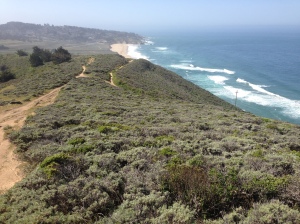 |
| View south towards Montara Beach |
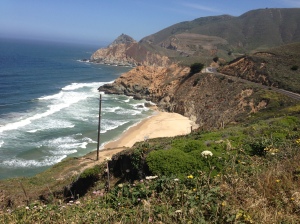 |
| Looking North towards Devil's Slide |
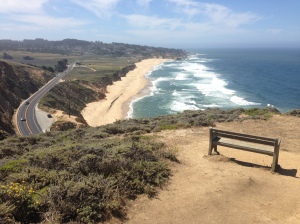 |
| Not a bad place to stop and enjoy a beautiful day |
The aptly titled
Montara Mountain Trail departs from the same trailhead and is a much more strenuous ascent to the 1900 ft summit. The trek begins with a gradual climb up a windy paved road surrounded by overgrown vegetation. After a couple miles, the road transitions into a wide dirt path that steepens considerably and contains little shelter from the elements. I had to stop several times to catch my breath during this stretch. Luckily, when you do stop, you are treated to gorgeous views that only get better as you climb in elevation. The vegetation also gets more interesting the closer you get to the summit. The lower growing elements of coastal sage scrub are replaced by tree-like ceanothus, coffeeberry, and my favorite, the Montara manzanita (Arctostaphylos montarensis), which can only be found on this mountain.
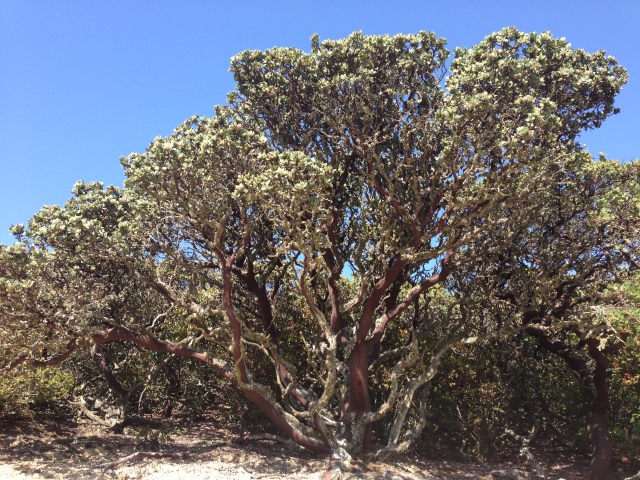 |
| The mighty Montara manzanita |
Views from the ascent:
 |
| Shortcut up the headlands to the Montara mountain trail |
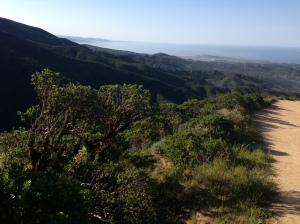 |
Looking south on a flatter portion of trail
|
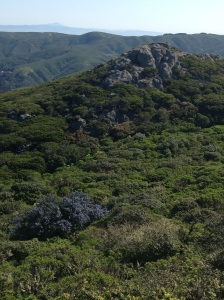 |
| An eastward view towards the Bay |
Once reaching the summit, the hiker is treated to panoramic views, fields of wildflowers, and, well, abandoned vehicles. All in all, a hike not to be missed if the skies are clear along the coast. Word of advice: get an early start to avoid the beating sun on a clear day.



